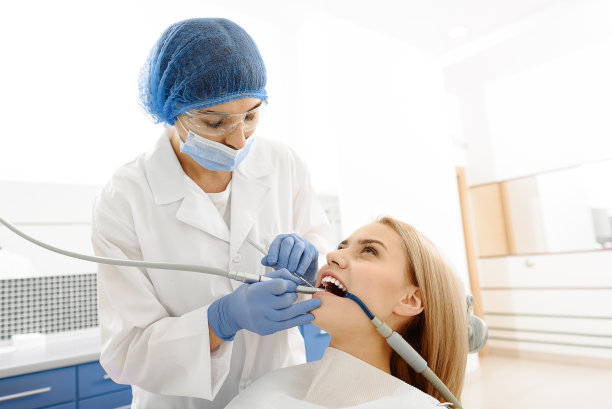Essential Guidelines for Patients Important Precautions to Take Before and After Dental Filling Treatment
Summary: This article provides essential guidelines for patients undergoing dental filling treatments. It emphasizes the importance of taking precautions not only before the procedure but also during the recovery phase. The article outlines key aspects like preparation for the treatment, immediate post-treatment care, dietary recommendations, and long-term maintenance for optimal results. Each section offers practical advice to ensure a smooth experience and minimize complications, tailoring insights specifically for patient needs. Through these guidelines, patients will gain a clearer understanding of how to best navigate their dental filling experience, enhancing their comfort, and promoting their oral health.
1. Preparation for Dental Filling Treatment

Before undergoing a dental filling treatment, proper preparation is vital to ensure the process runs smoothly. Firstly, patients should discuss their medical history with their dentist. This includes revealing any allergies, pre-existing conditions, or medications they are taking. Such information is crucial as it will help the dentist tailor the treatment and minimize potential risks.
Additionally, its advisable for patients to maintain good oral hygiene in the days leading up to their appointment. Brushing twice daily and flossing regularly can significantly reduce bacteria in the mouth, leading to a more straightforward treatment. Good hygiene practices also speed up recovery after the fillings are placed.
Moreover, arriving at the dental clinic well-rested reduces anxiety and makes the procedure more manageable. Patients should also consider organizing transport home, especially if sedation is used during the filling procedure. This precaution ensures that they have a safe and comfortable journey following their treatment.
2. Immediate Post-Treatment Care Guidelines
After dental filling treatment, patients must adhere to specific guidelines to promote healing and enhance the longevity of the filling. Immediately following the procedure, it’s common to experience numbness in the lips or tongue, particularly if local anesthesia was used. Patients should avoid eating or drinking until the numbness has completely worn off to prevent accidental bites or burns.
Furthermore, patients may experience sensitivity to hot or cold temperatures shortly after the filling. It’s a good practice to consume lukewarm foods and drinks for the first few days. By avoiding extremes in temperature, patients can help reduce discomfort and maintain the integrity of the filling material.
Another important post-treatment care step includes avoiding vigorous spitting or sucking motions for the first 24 hours, as these actions can unsettle the newly placed filling. Gentle rinsing and brushing should be practiced and can help in preventing complications while ensuring the treated area remains clean.
3. Dietary Recommendations After Treatment
A careful approach to diet after receiving a dental filling is crucial for recovery. For the first 24 hours post-treatment, patients should stick to soft foods that require minimal chewing. Foods such as yogurt, applesauce, and mashed potatoes are ideal choices, as they are gentle on the mouth and won’t disturb the filling.
Moreover, once the numbness has subsided, it is essential to avoid sticky or chewy foods, like caramel and gum, which can dislodge or damage the fillings. Hard foods should also be approached with caution; biting down on hard substances can impose undue pressure on fresh fillings, leading to potential failure.
Patients should also focus on maintaining hydration after treatment. Drinking plenty of water can promote healing and neutralize acidity in the mouth, reducing the risk of further dental issues. Avoiding carbonated or sugary beverages is advisable, as they can contribute to bacteria growth and decay around the dental filling.
4. Long-Term Maintenance of Your Fillings
Once dental fillings are placed, ongoing care is crucial to ensure they remain effective and to prevent further tooth decay. Regular dental check-ups play a vital role in monitoring the condition of fillings and the overall health of teeth. Dentists can provide insights about wear and tear and recommend timely repairs or replacements if necessary.
Keeping a consistent oral hygiene routine is equally important. Patients should brush twice a day and floss daily to eliminate plaque buildup around the fillings. This routine not only preserves the filling but also supports overall dental health.
Moreover, patients should consider using fluoride toothpaste or mouthwash. These products help strengthen tooth enamel and can protect fillings by reinforcing the surrounding tooth structure. By integrating these practices into their daily routine, patients can extend the lifespan of their fillings and safeguard their oral health against future issues.
Summary:
In conclusion, preparation, post-treatment care, dietary considerations, and long-term maintenance are essential components for patients receiving dental fillings. Following these essential guidelines will not only make the treatment process easier but also ensure optimal recovery and dental health.
This article is compiled by Vickong Dental and the content is for reference only.



